
Impact Fund Annual Report
Investment Profiles
Portfolio Overview
Home
Spotlights

We’ve partnered with Novata, an ESG and impact metrics collection and tracking tool designed for private markets.
Hear from our investment team: Introducing our five latest investments






Embracing the circular economy in telecom networks:
An interview with Simon Wort, Group CEO

Transforming Industries Through Innovation




Explore market dynamics driving the energy transition and its financial viability


We’ve partnered with Novata, an ESG and impact metrics collection and tracking tool designed for private markets.





Impact of AI in Behavioral Healthcare
Globally, more than 725, 000 people take their own life each year, and there are many more people who make suicide attempts. In fact, suicide was the third-leading cause of death among 15–29-year-olds globally in 2021. Every suicide is a tragedy that affects families, communities and entire countries and has long-lasting effects on the people left behind. Suicide is a serious public health problem that requires a public health response.
NeuroFlow’s platform uses natural language processing to evaluate suicide risk in patients by analyzing data from assessments and journal entries. On the back end, healthcare providers see a dashboard listing all of their patients and receive immediate alerts about patients in urgent need or changes to a patient’s mental status.
Since 2021, insurer Prudential has partnered with NeuroFlow to provide patients receiving disability benefits with mental wellness support via regular, remote clinical assessments and digital self-care resources. Since the program started, NeuroFlow has been alerted to 1,200 people at risk for suicide, and enabled interventions that helped bring a 34% decline in depression after triggering an alert.
According to [CEO Christopher] Molaro, in 2023, NeuroFlow alerted its clients to 33,000 people who were at risk of suicide, who he says may have otherwise slipped through the cracks in the healthcare system. “A lot of this is not new,” Molaro said. “It’s about how to make validated clinical assessments more engaging and scalable. The triple bottom line is to get people better, reduce cost, and make it sustainable by freeing up resources.”
Explore market dynamics driving the energy transition and its financial viability


Hear from our investment team: Introducing our five latest investments






Embracing the circular economy in telecom networks: An interview with Simon Wort, Group CEO




Source: https://www.fastcompany.com/91134349/neuroflow-ai-suicide-prevention-mental-healt
Source: https://www.who.int/news-room/fact-sheets/detail/suicide
"From the millions of website owners who have struggled to launch a digital accessibility program to the largest enterprises with the most complex digital ecosystems, we will have a solution to advance digital accessibility for every organization,” added Springer. “With this acquisition, we’re accelerating progress toward our objective of making as many digital experiences as possible accessible for users with disabilities."
"Our vision for a comprehensive digital accessibility solution will empower organizations of all sizes and of all complexities to make faster progress and lasting impact, which equates to excellence for their end users,” said Tim Springer, CEO and Founder of Level Access. “This acquisition sets the stage for a new wave of innovation, which will equip organizations to build accessible experiences at scale."
Organizations increasingly rely on automated remediation in their digital accessibility programs. According to the Fifth Annual State of Digital Accessibility survey, 34% of organizations leveraged automated remediation technology in 2023, which is a 14% jump from 2022.
Impact of AI in Digital Accessibility
In March 2024, Level Access completed its acquisition of UserWay, a pioneer in accessibility AI technologies. UserWay is a full-service provider of digital accessibility software solutions. UserWay is trusted by millions of websites globally to increase usability for people with disabilities. The Company’s Al-powered technologies help websites, apps and digital documents more readily achieve compliance with accessibility regulations, such as the ADA, Section 508, AODA and EAA, and internationally recognized standards such as WCAG 2.2 and EN 301 549.
In today's rapidly evolving landscape, companies across our portfolio are harnessing the potential of artificial intelligence (“AI”) to revolutionize various industries. Examples include:
Digital Accessibility: Level Access recently partnered with UserWay, a pioneer in accessibility AI technologies, to make as many digital experiences as possible accessible for users with disabilities and equip organizations to build accessible experiences at scale.
Online Education: Coursera analyzed insights from over 148 million learners and revealed a surging demand for AI literacy and education. Coursera has begun to offer specialized online courses focused on AI, bridging the knowledge gap and empowering learners. Similarly, Imagine Learning is actively funding AI-powered solutions to enhance both teaching and learning experiences.
Behavioral Healthcare: NeuroFlow is using AI to not only improve access to behavioral healthcare but also improve outcomes for patients by identifying and addressing suicide risk more efficiently, ultimately saving lives.
These companies exemplify how AI is reshaping industries and the way we live, from education to healthcare. Read on for deeper insights into their groundbreaking work!

In August 2023, Imagine Learning launched Imagine Learning Ventures, which targets investments in A.I.-powered educational solutions for K-12 educators and learners, facilitating greater access to educational tools and improved educational outcomes.
To learn more about how Coursera is helping its customers keep pace with Generative AI, explore the 2023 Educator AI Report and the 2024 K-12 Administrator AI Report.
Provide GenAI trainings and best practices
Provide a digital watermark for content
that was produced using GenAI
Allow districts to customize the
raw data sources GenAI uses
Alert districts of suspected inappropriate use
Provide users real-time feedback about
how to improve the results of GenAI
Publish and use a code of ethics when
developing GenAI
Provide feedback channels to report
inaccurate or unfavorable GenAI results
Create guided tutorials for users to
complete prior to using GenAI
Enable toggling on and off GenAI features
Ensure that any feedback to students is
first reviewed by a teacher
What could curriculum providers and educational technology companies do, if anything, to reduce the risks/concerns associated with using GenAI in K-12 education?
(Top 10 responses provided)
Creating lessons or instructional materials
Providing automated coaching or tutoring
for students
Brainstorming/idea generation
Communicating with students and
family members
Recommending instructional strategies for
teachers to implement in lessons
Personalizing inquiry- or problem-based
learning pathways
Individualizing lesson materials/resources
for students
Creating accessible lesson materials for students
with disabilities
Providing personalized, instructive feedback
to students
Synthesizing student data from multiple subjects/
sources to recommend academic interventions
Which of the following applications of GenAI would benefit teachers most in supporting student learning? (Top 10 responses provided)
Impact of AI in Online Education
Coursera collected insights from more than 148 million global learners to equip people with critical skills to thrive amid rapid change. One of the main trends shaping the learning landscape in 2024 is the rise of AI literacy. Coursera shared the following:
AI literacy emerges as a global imperative
The launch of ChatGPT ignited a global race toward AI literacy. Generative AI (“GenAI”) course enrollments surged by 1,060% globally over the past year as learners sought foundational AI skills and enrolled in courses like “Prompt Engineering for ChatGPT” by Vanderbilt University and “Introduction to Generative AI” by Google Cloud.AI readiness initiatives drive emerging skill adoption
The steep increase in GenAI course enrollments isn’t just a reflection of learner interest. It demonstrates the efforts of businesses, governments and higher education institutions to prepare AI-ready economies. Across the globe, various AI initiatives are laying the foundation for skill development and innovation. In North America, 72% of U.S. CEOs say GenAI is a top investment priority, driving the rapid growth of the AI talent pool and increasing investments in employee AI training. Regions like Asia Pacific (1,270% YoY) and Sub-Saharan Africa (1,500% YoY) are also witnessing significant growth in GenAI course enrollments. Targeted government initiatives in countries such as India, Malaysia, and Thailand are setting the stage for AI training and adoption. India’s $1.2 billion investment in AI projects, Malaysia’s National AI Studies Centre, and Thailand’s AI infrastructure development program are just a few examples.
To learn more, explore additional trends below and ready Coursera’s full 2024 Global Skills Report here.
When it comes to readiness, however, only 15% of educators feel “prepared” or “very prepared” to oversee the use of Generative AI in the classroom, with over twice that number (32%) expressing they are completely unprepared to do so. 65% cite a lack of familiarity as the primary obstacle to the future utilization of Generative AI.
As a result, more than half of administrators surveyed are looking to EdTech for training, best practices and identifying GenAI content.
With Generative AI emerging as a pivotal element in the dynamic educational landscape, Imagine Learning surveyed 163 teachers, school administrators and support staff to explore the perceptions, current practices and future aspirations of educators. Review their findings below:
A resounding 90% of educators surveyed believe that AI has the potential to make education more accessible. Increasingly, teachers are recognizing that when implemented ethically and with thoughtful consideration, AI can help students with special needs, learning disabilities and language barriers, for example, and experience more effective, personalized learning methods.
In addition, half of the leaders surveyed think that GenAI can reduce teachers’ most time-consuming tasks: creating lesson materials and generating ideas/strategies for lessons.


We’ve partnered with Novata, an ESG and impact metrics collection and tracking tool designed for private markets.
Transforming Industries Through Innovation





Embracing the circular economy in telecom networks: An interview with Simon Wort, Group CEO



Hear from our investment team: Introducing our five latest investments






While the myth that a focus on sustainability will ruin future returns might have been a justified stance at one point in time, beliefs around sustainable and impact investing have evolved. The combination of improved return potential and increasing investor appetite to drive positive outcomes – both financially and non-financially – has led to emerging managers, platform extensions and select re-positioning of mature managers to address this market segment. As of June 30, 2024, our investment team has identified approximately 1,650 fund managers pursuing strategies serving positive environmental or social outcomes. Looking forward, we expect that there will be continued growth and diversification of the addressable market generating positive non-financial outcomes in addition to financial return.
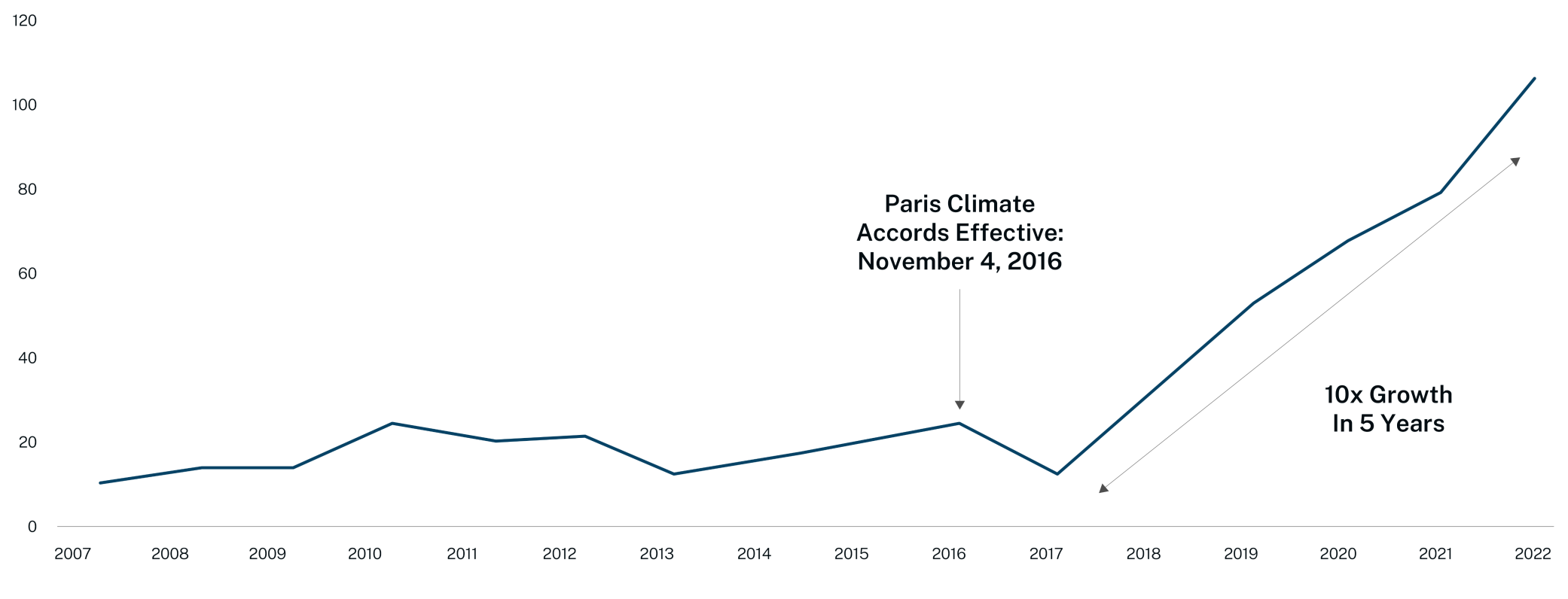
Source: Hamilton Lane Proprietary Fund Database as of February 1, 2023
Energy Transition Focused Funds In Market
Fund count in Hamilton Lane Proprietary Fund Database
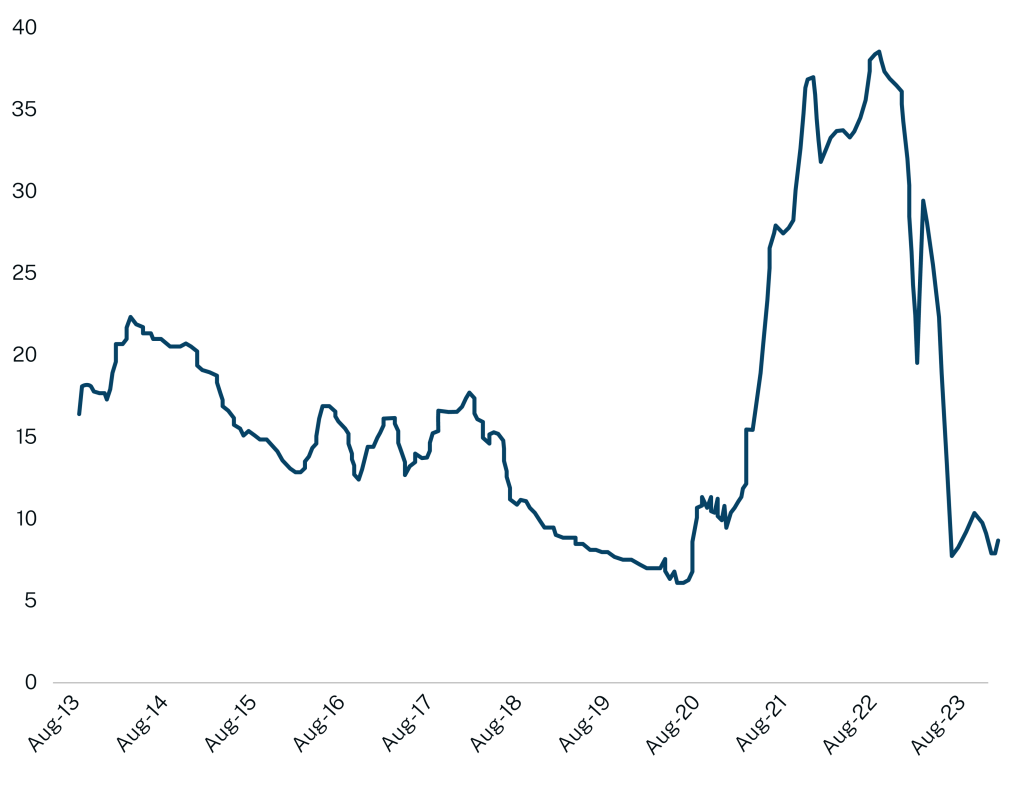
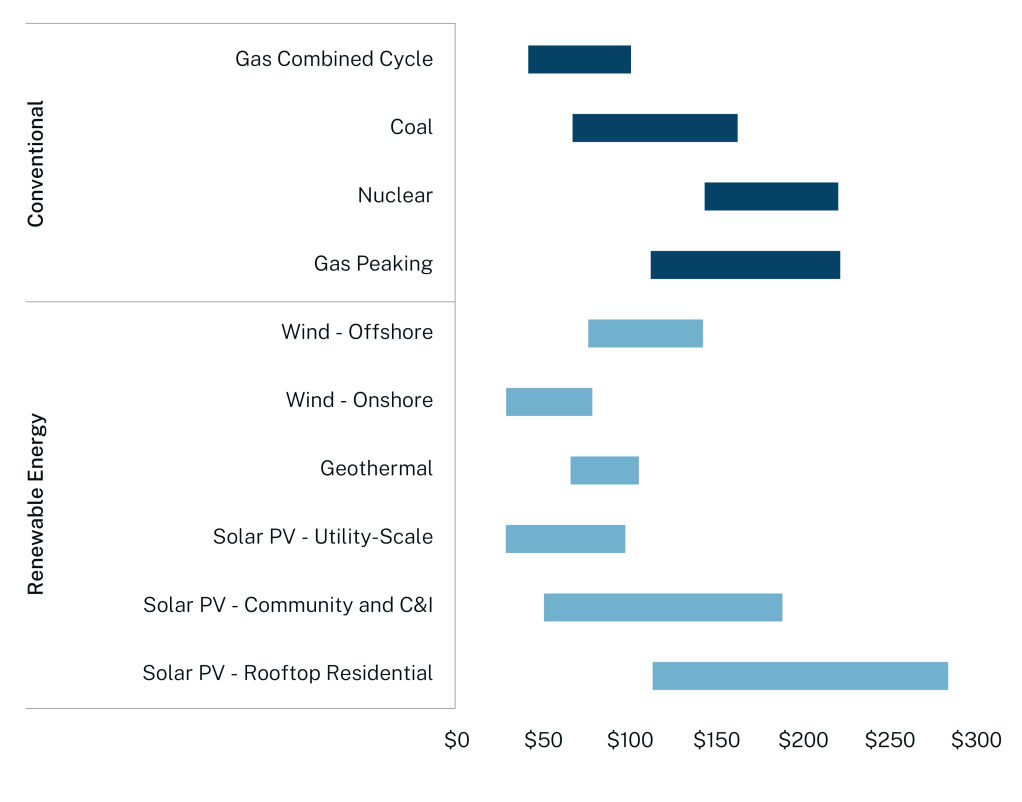
Source: Bloomberg, December 2023
Source: Lazard, April 2023
Polysilicon Raw Material Cost Back to Normalcy
$/kg, through January 9, 2024
Cost Comparison of Conventional and Renewable Energy
Unsubsidized Levelized Cost of Energy ("LCOE"), $/MWh
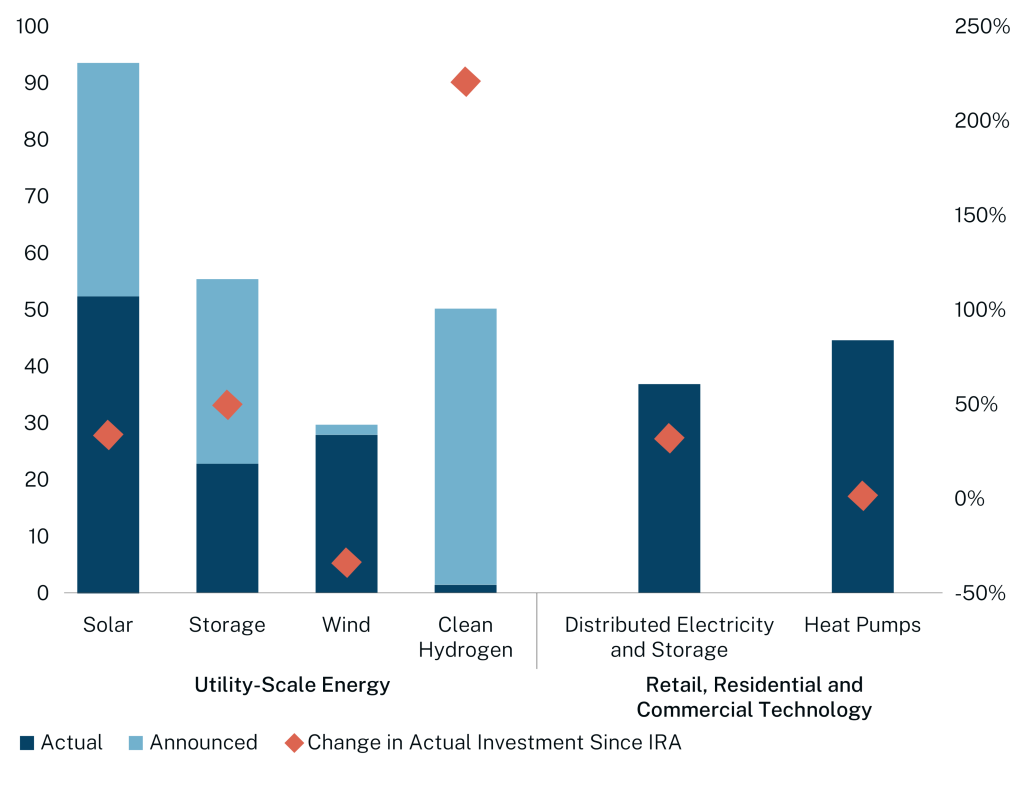
Source: Deloitte 2024 Renewable Energy Industry Outlook. Please note that wind change was negative and is therefore not shown.
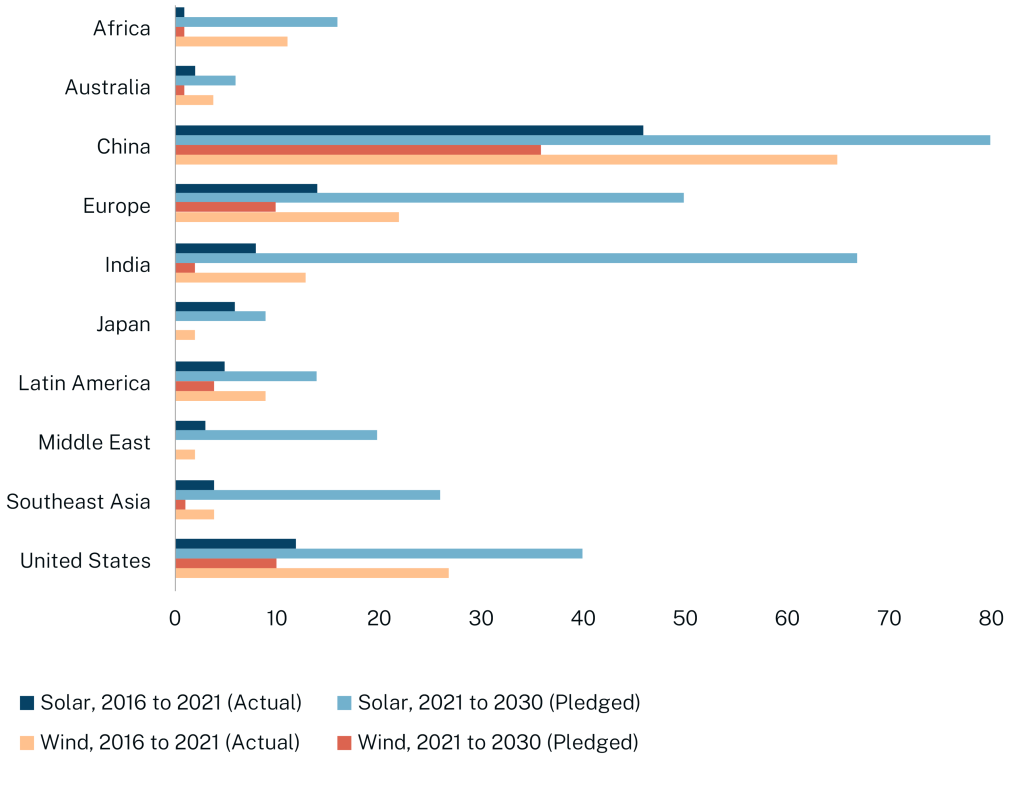
Source: McKinsey, December 2022
U.S. Renewables Investment Boosted by the IRA
Investment Between Q3 2021 and Q2 2023, $ Billions and % Change
New Renewables Capacity Pledged by Region
Average Capacity Installed per Year, GW
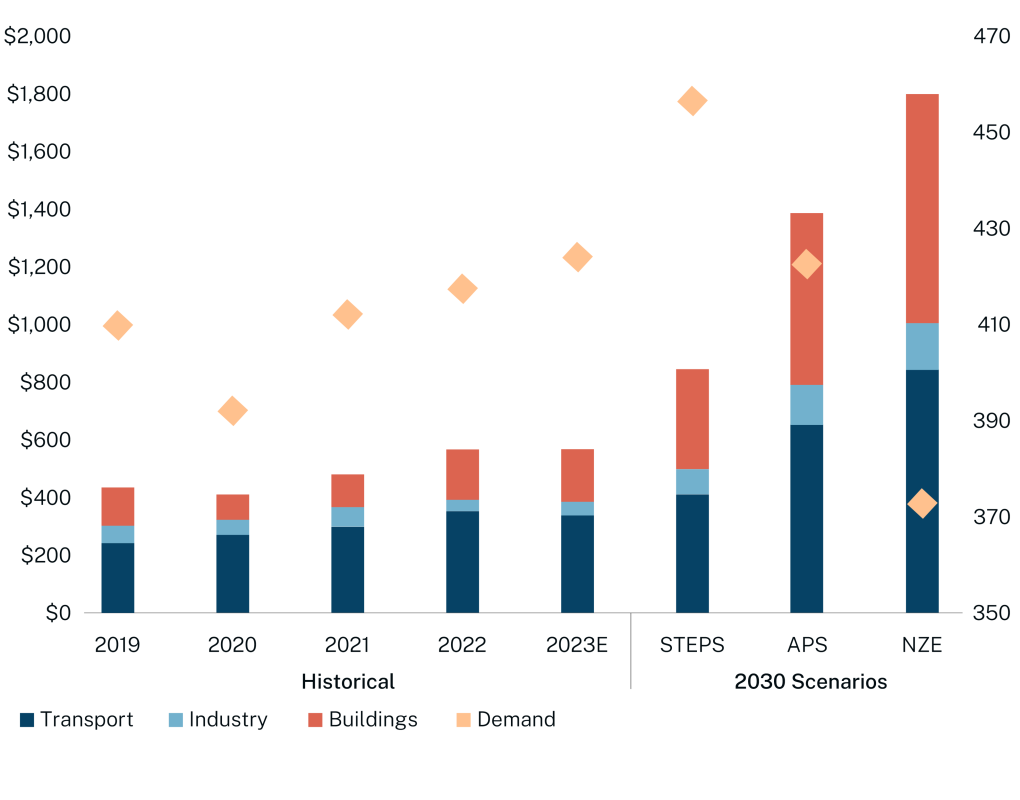
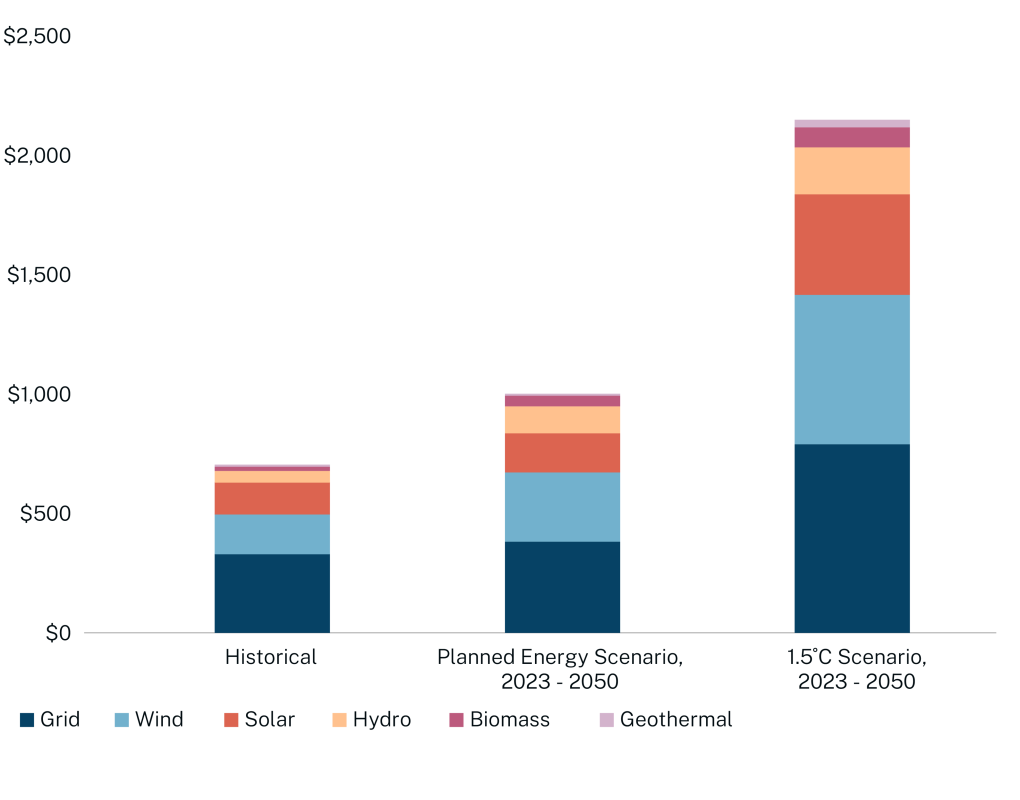
Source: IEA, May 2023
2STEPS = Stated Energy Policies Scenario, assessment of climate targets based on the 2023 policy landscape;
APS = Announced Pledges Scenario, assumes all national climate targets worldwide will be met;
NZE = Net Zero Emissions Scenario, sustainable pathway to net zero emissions by 2050
Source: IRENA, June 2023
1Planned Energy Scenario is based on global climate targets as of 2019 or where available, updated targets 1.5°C Scenario assumes sufficient progress to limit global warming to 1.5°C
...and On Energy Efficiency and Electrification2
Annual Investment, $ Billions; Annual Energy Demand, EJ
Significant Investments in Power Infrastructure Required1...
Average Annual Investment, $ Billions
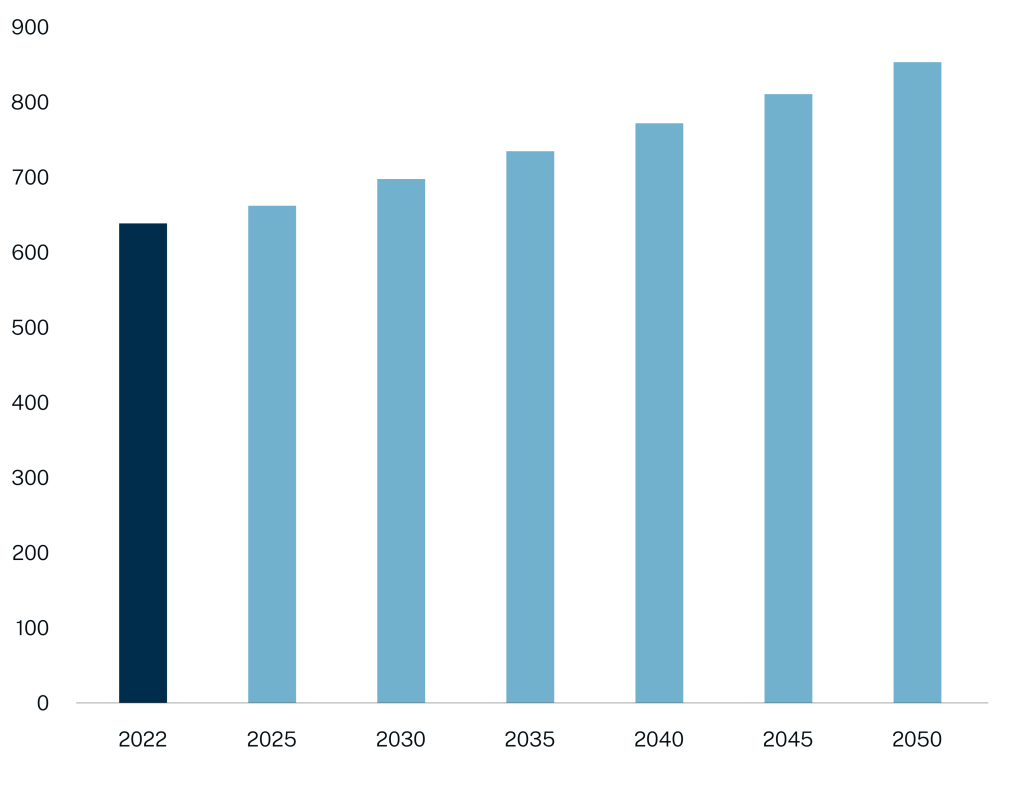
Source: EIA, 2023
Source: Google Trends, January 2024
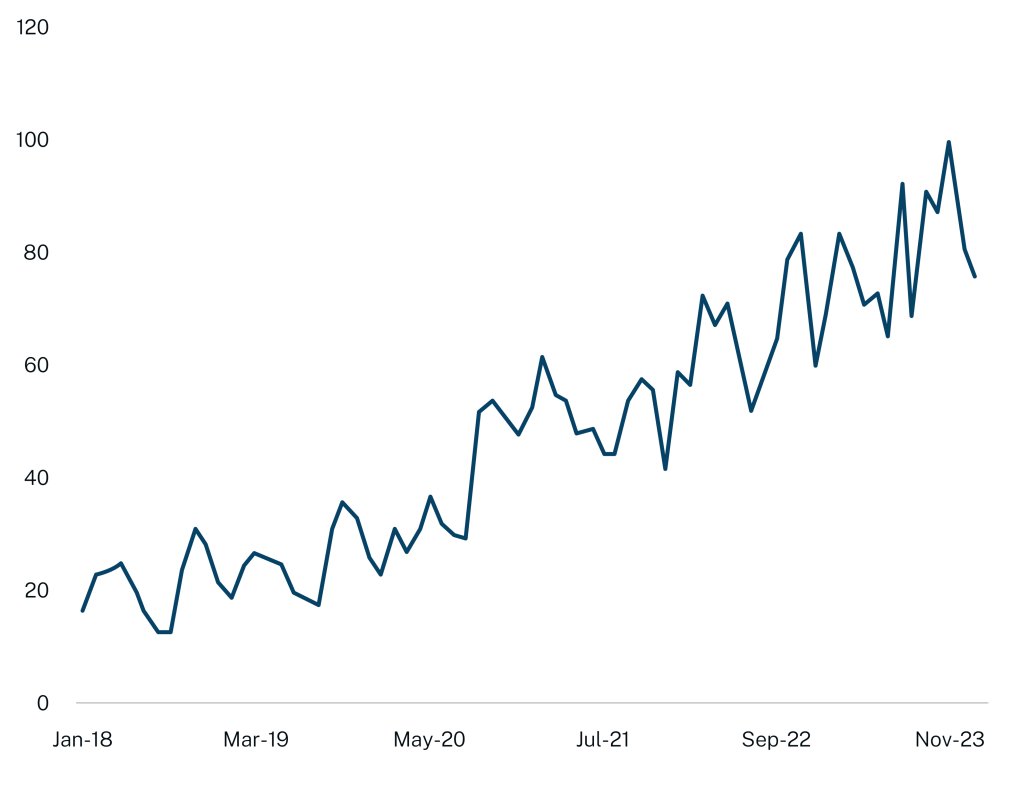
Global Projected Electricity Consumption
Quadrillion British Thermal Units
“Energy Transition” Google Search Trends
Search Interest Relative to the Highest Point
So, How Have Private Markets Responded?
The number of energy transition-focused funds has surged tenfold in the past five years, reflecting growing investor demand and opportunity in the sector.
... and Cost Differentials Between Conventional and Renewables are Narrowing.
As renewable technologies mature and supply chains stabilize, the economic case for transitioning to cleaner energy sources strengthens. This shift is highlighted by the decreasing costs of renewable energy compared to traditional fossil fuels, as shown below.
The Good News: Policy Support is Propelling Investments in Renewables Globally...
Policy support plays a crucial role in this transition. For example, the U.S. has seen a notable boost in renewables investment, largely driven by the inflation Reduction Act (IRA). This policy-driven momentum is critical for accelerating the shift towards sustainable energy.
...Requiring Vast Sums of Capital
To achieve the ambitious goal of limiting global warming to 1.5 degrees Celsius, substantial investments in power infrastructure and energy efficiency are essential, as outlined below.
Driven by the dual forces of electrification and economic growth, which are expected to substantially increase the demand for electricity. As illustrated below, a rising interest in the energy transition exists as a surge in global electricity consumption in anticipated.
The Energy Transition is Gaining Steam…
One of the most hotly debated myths is that sustainable investments sacrifice performance, which at one point in time might have been a justified stance. We wanted to test the data ourselves.



Myth Busted.
Read on to explore current market dynamics driving the energy transition and its financial viability.
Nina Kraus shares insights into sustainable investment performance within the context of the private markets.

We’ve partnered with Novata, an ESG and impact metrics collection and tracking tool designed for private markets.

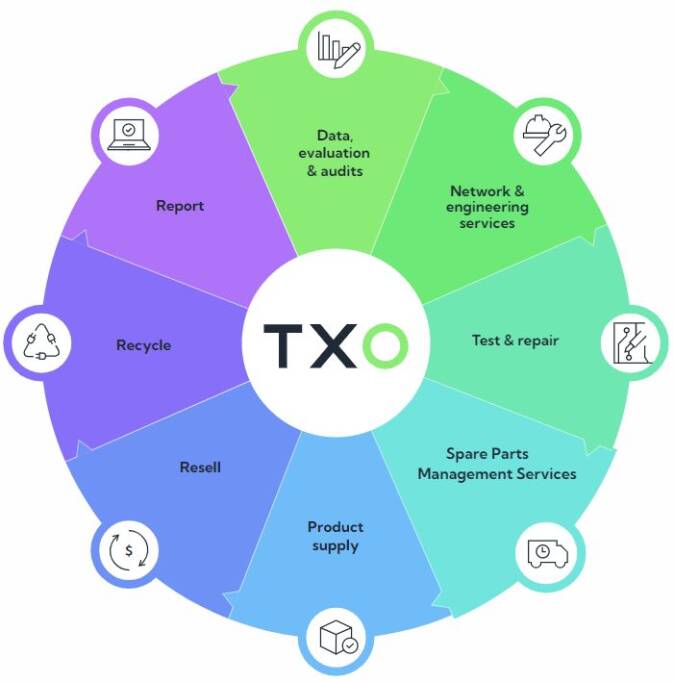


Regenerate natural systems
Keep products and materials in use
Design out waste and pollution

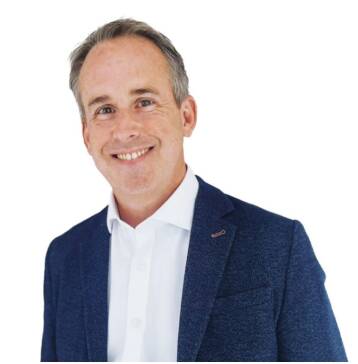

Transforming Industries Through Innovation





Explore market dynamics driving the energy transition and its financial viability


Hear from our investment team: Introducing our five latest investments






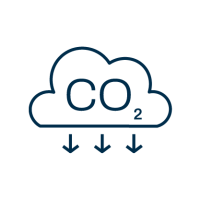

Carbon emissions saved
Reductions in
e-waste
Volume of equipment refurbished/reused


"Our collaboration with Hamilton Lane Impact and TowerBrook Delta fosters transparency and accountability, allowing us to align our strategies with the expectations of our stakeholders and report on meaningful and measurable KPIs. Additionally, their insights and support for value creation help us refine our initiatives, ensuring that we remain focused on delivering long-term value while advancing our commitment to sustainable practices."
Can you discuss the importance of alignment with your investors and stakeholders (including Hamilton Lane Impact and TowerBrook Delta) and your company mission?
Alignment with our investors and stakeholders is crucial to fulfilling our company mission at TXO. By ensuring our sustainability objectives resonate with their values, we create a shared vision that drives meaningful impact.
Ultimately, this alignment strengthens our position in the market and enhances our ability to drive positive change in the telecom industry.
What steps are you taking to educate and engage your customers about the importance of recycling and sustainability in telecoms? Does your approach differ by region?
At TXO, we take a proactive approach to educate and engage our customers about the importance of recycling and sustainability in telecoms. We develop tailored educational materials and resources, including videos, workshops and informative content, that highlight the benefits of sustainable practices and the impact of recycling on reducing e-waste. We also collaborate with our clients to integrate sustainability into their operational strategies, providing them with actionable insights and best practices.
Our approach does vary by region, as we recognize that different markets have unique challenges and regulations. In areas with strong sustainability mandates, we focus on compliance and advanced recycling techniques. In regions where awareness is still developing, we prioritize foundational education and support to help customers understand the value of sustainable practices. This targeted engagement ensures we effectively promote recycling and sustainability across all our customer bases while fostering a culture of environmental responsibility.
Any final thoughts you’d like to share?
As we move forward, I believe that embracing a circular economy will be pivotal for the telecom industry’s future. At TXO, we are committed to leading this transformation, championing innovative solutions that not only enhance operational efficiency but also significantly reduce our environmental impact. I encourage all stakeholders to join us in prioritizing sustainability, as it is not just a responsibility but also a tremendous opportunity for growth and value creation. Together, we can drive meaningful change and pave the way for a more sustainable future in telecoms.
Can you share some insights into how TXO’s approach to the circular economy has evolved?
Over the years, we’ve significantly enhanced our capabilities in alignment with our commitment to sustainability. This evolution includes strategic acquisitions that bolster our engineering, testing and repair services, as well as the development of innovative tools like our i-TOOLs stack for effective asset management. Additionally, our global presence enables us to deliver localized support to clients around the world, minimizing the carbon footprint associated with transporting equipment over long distances. This holistic approach reflects our dedication to driving meaningful change in the telecom industry.
Looking ahead, what role do you see the circular economy playing in the future of telecoms?
I envision the circular economy becoming a cornerstone of the telecom industry in the coming years. With growing regulatory pressures and heightened consumer awareness around sustainability, companies that prioritize circular practices will not only meet compliance but also enhance their market position. At TXO, we are committed to being at the forefront of this transformation, continuously innovating our services to support sustainable network lifecycle management and ensuring that our clients can thrive in a more sustainable future.
Much like Hamilton Lane, TXO relies heavily on data. Can you tell us more about how you measure the success of your circular economy initiatives and track your contributions toward more sustainable and efficient operations across the industry?
At TXO, we leverage a robust data-driven approach to measure the success of our circular economy initiatives. We track key performance indicators such as the volume of equipment refurbished and reused, the reduction in e-waste and the carbon emissions saved through our asset recovery processes. By analyzing this data, we can assess our operational efficiency and environmental impact, enabling us to make informed decisions and continually refine our strategies. Additionally, we employ advanced analytics and reporting tools to provide our clients with transparent insights into their sustainability contributions, helping to demonstrate the tangible benefits of adopting circular practices in their operations. This commitment to data not only enhances our accountability but also drives continuous improvement across the industry.
What are the main benefits of adopting circular economy practices for telecom networks?
Adopting circular economy practices delivers multiple advantages for telecom networks. Environmentally, I see it drastically cutting waste and reducing the need for raw materials, which helps to shrink the industry’s carbon footprint. Financially, it drives significant cost efficiencies by enabling the reuse and refurbishment of equipment, offering a more sustainable alternative to constantly purchasing new hardware. Additionally, it fosters innovation, pushing us to explore smarter ways to extend asset lifecycles and create value from existing resources.
How does TXO support its clients in transitioning to a circular economy model?
At TXO, we offer a comprehensive suite of services that support the entire lifecycle of telecom equipment, making it easy for our clients to transition to a circular economy without compromising on quality or performance. Our global expertise in asset recovery, combined with our industry-leading refurbishment, testing and repair services, ensures that every piece of equipment meets the highest standards. This provides a reliable, cost-effective alternative to new equipment, helping our clients embrace sustainability while maximizing value.
Could you explain what the circular economy means for the telecom industry?
The circular economy is transforming the telecoms industry by unlocking new revenue streams through the reuse, refurbishment and recycling of equipment. By extending the life of telecom assets and reducing e-waste, companies can drive down costs, meet growing sustainability demands and capitalize on high-value services like asset recovery. For TXO, this means delivering tangible business and environmental benefits through innovative solutions such as rail urban mining, turning sustainability into a strategic advantage that fuels both growth and impact.
"TXO has a hugely exciting opportunity to serve a global customer base and lead the charge for an ESG-conscious and circular economy-driven telecoms industry, and I’m looking forward to helping drive this as much as I can. While the journey TXO is undergoing is exciting, the one we can bring our customers on is even more so. Operators around the world are at different stages of this evolution, but TXO is going to be a crucial partner in this, helping them unlock untold financial and environmental benefits. "


We’ve partnered with Novata, an ESG and impact metrics collection and tracking tool designed for private markets.
Embracing the circular economy in telecom networks: An interview with Simon Wort, Group CEO



Transforming Industries Through Innovation





Explore market dynamics driving the energy transition and its financial viability



Jérôme Kamm discusses H&MV’s role in supporting the clean energy transition across Europe by providing high-voltage design and construction services that connect renewable energy sources to the grid.

Ben Kalter highlights the importance of energy efficiency and discusses CLEAResult’s role in bridging the energy supply-demand gap through its programs, which are essential to the stability of the electrical grid and to reducing overall greenhouse gas production.

Rob Duval provides an overview of Heritage-Crystal Clean, a provider of essential environmental services that help businesses manage waste responsibly and cost-effectively.
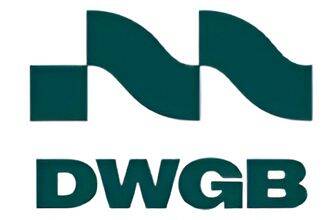
Lindsay McCorkle shares insights into Daewon’s role as one of the largest solid food waste treatment operators in South Korea and the Company’s continued efforts to reduce carbon emissions.

Olivia Nick discusses 1Komma5’s mission to accelerate the net-zero transition in the home decarbonization market and Hamilton Lane’s strategic involvement in supporting its growth across Europe.










